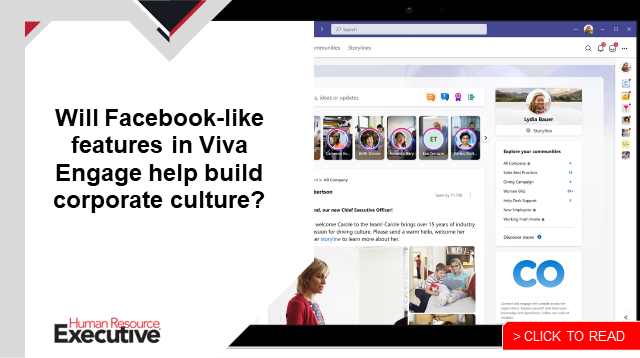As competition for talent remains hot, employers are looking for any avenue to draw people in and keep them—prompting many to take a closer look at their employee experience.
While the journey to a better EX may include aspects like added benefits, heightened flexibility or new opportunities for internal mobility, many of those shifts are underscored by a need for better tech.
“Employees expect consumer-quality tech experiences at work,” says Laszlo Bock, co-founder and executive chair of HR tech company Humu and a former HR exec at Google. Despite those expectations, Bock says, most internal HR systems—from performance management to core HR—are “terrible.”
“It’s a chronic problem for HR departments in that they buy software and no one uses it,” he says. That’s where chief information officers can help.
Embracing new opportunities
A stronger relationship between HR and IT leaders is a key factor in promoting a better employee experience, Bock says.
But, the increasing focus on EX isn’t the only shift necessitating a closer partnership between the two functions. Bock says that the rise of hybrid work, accelerated digital transformations, and the “chronic uncertainty” in the world are all fueling gaps that people and tech leaders can fill together.
It’s a departure from the past, says Julie Simmons, chief information officer at Swire Coca-Cola, one of the Coca-Cola Co.’s largest bottling partners and an employer of 7,200 people. Traditionally, HR and IT worked in silos, largely owing to the fact that technology and data just weren’t “front-and-center” pieces of most employers’ people strategies.
“HR systems were just used to store and maintain static employee data,” she says.
 But, as technology advances and employers increasingly embrace capabilities like machine learning and AI, data and predictive analytics are becoming cornerstones of people management.
But, as technology advances and employers increasingly embrace capabilities like machine learning and AI, data and predictive analytics are becoming cornerstones of people management.
“These opportunities necessitate a strong partnership between HR and IT,” Simmons says, “and create a great opportunity to drive innovations that were not possible before.”
While EX innovation is a must for today’s market, areas like employee engagement, digital empowerment and better data privacy can all be supported by HR and IT collaboration, Bock says. In addition to the expertise leaders from both functions bring to such work, the fusion of their mindsets is also important: Whereas CHROs are often driven by the impact of a project on employee sentiment and its qualitative measure—i.e., the number of people hired—CIOs bring a focus on aspects like deployment and uptime.
“There is better adoption across an organization when CHROs and CIOs jointly own things like employee happiness, retention,” Bock says. “This is particularly true in hybrid work, where HR can’t rely on themselves or team managers sitting down with people and coaching in real time.”
Agility and alignment
Employers looking to marry the work of their HR and IT teams need to first ensure their goals are aligned—and that they support the wider business strategy.
It’s about “having a committed vision and goals and being tightly connected with how [HR and IT] work and communicate and enable collective success,” Simmons says.
At Swire Coca-Cola, the focus companywide is on “limitless thinking and an innovative culture”—and that has helped shape how HR and IT work together to provide employees with a consumer-grade technology experience at work. That partnership has involved an agile mindset, openness to new collaboration and the alignment of resources, which has helped the company test and iterate—and, ultimately, innovate—quickly.
A willingness to experiment—on both the part of HR and IT teams—is vital to a successful partnership, adds Bock.
“Just as importantly,” he says, “they need to establish clear, shared metrics that measure the outcomes of programs—not just usage—to answer questions like, ‘Is the product making work better?’ and ‘Is it driving productivity?’ ”
 When HR and IT can successfully answer these questions, using data and analytics, adds Simmons, it can shape the entire ecosystem of the employee life cycle—and dictate how the company’s people strategy holds up in a market like that of today.
When HR and IT can successfully answer these questions, using data and analytics, adds Simmons, it can shape the entire ecosystem of the employee life cycle—and dictate how the company’s people strategy holds up in a market like that of today.
“Everyone has a war on talent. Any edge that you can put in place will help not only your competitive advantage but help your unique value proposition,” she says. “Your employee experience is going to help you as a company, and partnering together can really drive that successfully.”
Learn how HR and IT can leverage new technology to improve the employee experience during the upcoming HR Tech Virtual Conference—a free, online event being held Feb. 28-March 2. Click here for more information or to register.
The post Former Google exec: HR, IT need to get a lot closer next year appeared first on HR Executive.